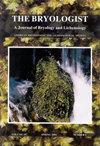如何干燥苔藓植物:四种诱导干燥耐受性方法的综述和实验测试
IF 1.5
4区 生物学
Q4 PLANT SCIENCES
引用次数: 3
摘要
摘要综述了上个世纪约290篇关于苔藓植物干燥耐受性(DT)的研究文章,揭示了四种结合平衡干燥的突出方法。我们比较了这些方法(称为常规法、湿润基质法、逐步下降法和部分干燥法)在四种苔藓中诱导特征DT,这四种苔藓占据着明显不同的进化支,并且已知表现出诱导DT的策略(尖叶藻、潮毛藻、银藻和钝毛藻)。常规=直接放置在33%相对湿度下的植物;湿润基质=植物通过湿润基质以不同的速率(时间)干燥至33%RH;逐步下降=植物按从100、75、54、然后33%RH的顺序干燥至平衡;部分干燥=在33%相对湿度下放置之前,将植物暴露在100%相对湿度下。每种方法的疗效都是通过复水后7天的叶绿素荧光和叶片或组织损伤评估的复水后损伤和恢复来评估的。对于每种叶绿素荧光测量,物种、干燥方法和时间之间存在显著的三元相互作用。四种方法中的三种在再水化24小时后产生了良好的恢复,而接受常规方法的植物没有从干燥中恢复。对于部分干燥法和类似的降压和湿润基质法,在再水合后立即减少光合损伤。再水化后7天的组织损伤相当于湿润基质、逐步干燥和部分干燥方法,大多数植物在传统干燥方法后死亡。除常规方法外,所有方法在补液24小时后的恢复均接近对照水平。不同干燥方法的物种差异很大。Suburgor假说是为了解释干燥耐受性的诱导程度而提出的,并得到了普遍支持,但需要注意的是,在测试的三种最成功的方法中,基于Suburgor的时间,逐步下降法的表现要好于预期。本文章由计算机程序翻译,如有差异,请以英文原文为准。
How to dry a bryophyte: A review and experimental test of four methods to induce desiccation tolerance
Abstract. A review of ∼290 research articles on bryophyte desiccation tolerance (DT) over the last century reveals four prominent methods that incorporate equilibrium drying. We compare these methods (called Conventional, Wetted substrate, Step-down and Partial drying) in terms of inducing the trait DT in four species of mosses occupying distinctly different evolutionary clades and known to exhibit an inducible strategy of DT (Phascum cuspidatum, Funaria hygrometrica, Bryum argenteum and Syntrichia obtusissima). Conventional=plants placed directly at 33% RH; Wetted substrate=plants dried at different rates (times) to 33% RH by wetting the substrate; Step-down=plants dried to equilibration in sequence from 100, 75, 54, then 33% RH; Partial drying=plants exposed to 100% RH prior to placement at 33% RH. Efficacy of each method was evaluated using postrehydration damage and recovery as assessed from chlorophyll fluorescence and leaf or tissue damage 7 days postrehydration. For each chlorophyll fluorescence measure, there was a significant three-way interaction between species, drying method and time. Three of the four methods produced good recovery after 24 h of rehydration, with the plants subjected to the Conventional method not recovering from desiccation. Photosynthetic damage immediately upon rehydration was reduced for the Partial dry method and similar for the Step-down and Wetted substrate methods. Tissue damage 7 d postrehydration was equivalent for the Wetted substrate, Step-down and Partial dry methods, and most plants died following the Conventional method of drying. Recovery following 24 h of rehydration was near control levels for all methods but the Conventional. Species differences were considerable among drying methods. The Subturgor Hypothesis is advanced to explain degree of induction of desiccation tolerance, and was generally supported, with the caveat that, among the three most successful methods tested, the Step-down method performed better than expected based upon time at subturgor.
求助全文
通过发布文献求助,成功后即可免费获取论文全文。
去求助
来源期刊

Bryologist
生物-植物科学
CiteScore
2.40
自引率
11.10%
发文量
40
审稿时长
>12 weeks
期刊介绍:
The Bryologist is an international journal devoted to all aspects of bryology and lichenology, and we welcome reviews, research papers and short communications from all members of American Bryological and Lichenological Society (ABLS). We also publish lists of current literature, book reviews and news items about members and event. All back issues of the journal are maintained electronically. The first issue of The Bryologist was published in 1898, with the formation of the Society.
Author instructions are available from the journal website and the manuscript submission site, each of which is listed at the ABLS.org website.
All submissions to the journal are subject to at least two peer reviews, and both the reviews and the identities of reviewers are treated confidentially. Reviewers are asked to acknowledge possible conflicts of interest and to provide strictly objective assessments of the suitability and scholarly merit of the submissions under review.
 求助内容:
求助内容: 应助结果提醒方式:
应助结果提醒方式:


